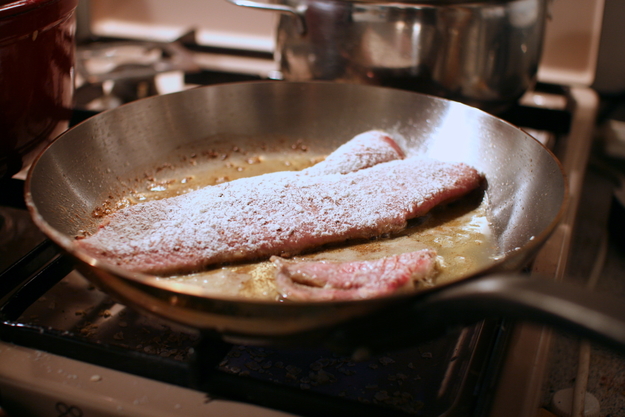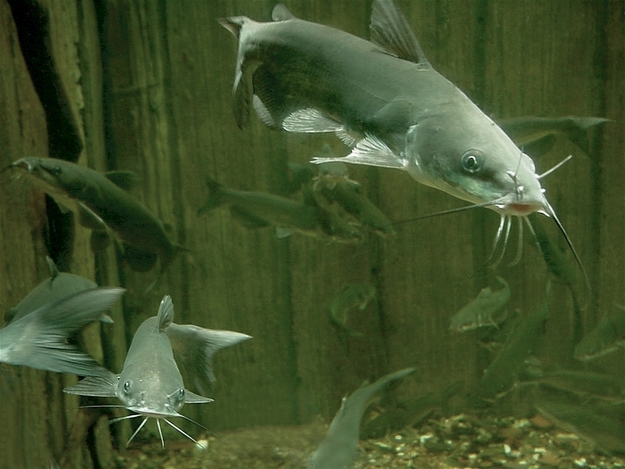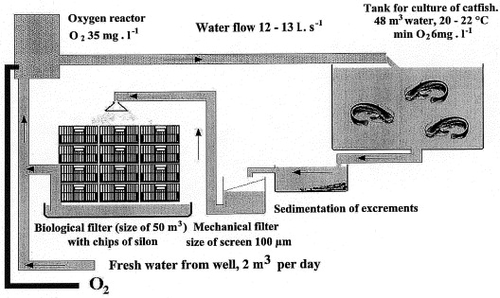However, we won't be carrying around three-meter-long monsters. Farmed catfish are harvested when they're about 65 cm, or 1 to 1,5 kg we learned from Michel, who told us all about catfish farming. He runs the small fish farm De Kopervis in the polder, producing about 10.000 kg fish per year. He uses sustainable techniques to warm and clean his water and he respects his animals, so he doesn't put too many of them in one tank. He inspired us to try catfish in our aquaponics system.
His system actually works a lot like ours: he uses a biofilter to get rid of the ammonia. We do this by letting the bacteria grow between pebbles, he uses a tower of plastic mats to get plenty of oxygen to the bacteria. He also has a settling tank to catch all the solid parts (which he uses for his own vegetable patch).
I found this diagram, but cannot possibly find the source so please forgive me for using it… The biggest difference between this diagram and Michel's way of farming is that he uses less fish, so he has less waste, so he doesn't have to replenish his water as often as in this diagram. I don't think he has an oxygen reactor either.
Michel farms the African Catfish, apparently the Netherlands is one of the leading specialized countries farming them. Wageningen University did a lot of research about this species. There is also a European catfish, but it has been protected in the Netherlands for a long time. Now that there's an abundance of these fish, regulation is gradually changing. You cannot catch them, but you can farm them. The problem is how to get the fingerlings… So for now we'll probably stick to the African ones.
Being a specialized country apparently isn't enough to get the Netherlands to eat catfish. Most of it is exported to Germany and other countries where it's quite popular. Michel sells to local restaurants and people who appreciate the fish, but he has a hard time finding a good market. We think we can take that hurdle, we're in Amsterdam after all.
Killing and filleting catfish is quite a challenge. They are strong and slippery, so you have to sedate them before chopping the head off - which is not as easy as it sounds. If you do it right, after filleting you haven't got any bone in the flesh, but that takes experience. Then you can freeze the fillet right away, or brine, dry and smoke it. Catfish isn't really suitable for eating raw, but it sticks together very well. So good even that you can use it on the barbecue! We bought some fillets from Michel and tried it for ourselves:
Frying catfish - Catfish covered with flower in the frying pan

Michel told us a lot about how to take care of catfish: what they eat, how fast they grow, how many you can put in a tank, what temperature they like etc., so we feel a little prepared to take on our first babies now. That's what he said: you can talk and read as much as you want, but at one point you should just try it and get first-hand experience. So that's what we'll do!

